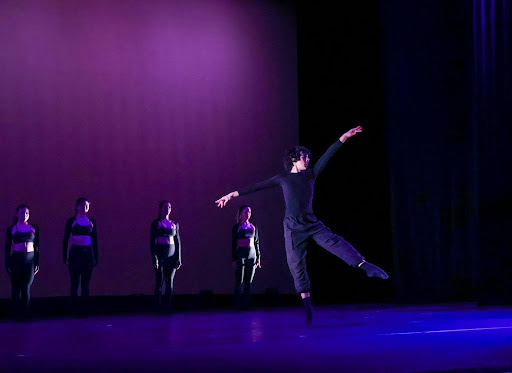Security dog keeps campus safe, happy
Coming to a new school is tough, especially when you are the youngest and bark at the color red.
Sheba, a six-month-old female German Shepherd, joined the Upper School this year as a new member of the security team. Sheba roams the campus with owner and Director of Security and Facilities Richard Still.
After three months of professional dog training, Sheba was ready to meet students. Her first day was going well until she saw a number of students wearing red, which resulted in lots of barking.
In order to help in her transition to high school, Still and Upper School Administrative Assistant Becky Leakey put a lot of red skirts and shirts on one of the couches in Still’s office so she would be more comfortable around the color. Now, Sheba no longer takes an offense to red.
Training during the school day, Sheba works on verbal commands and sensory skills on campus. During lunch, she plays fetch on Caven Field.
Having plenty of play time and exercise is beneficial to her health, but like so many young dogs, Sheba can burn out easily if overworked.
As a puppy, Sheba was initially overwhelmed by the sheer number of students approaching her.
“She is still a little bit skittish around the Lower Schoolers because they will swarm her,” Still said. “But with Upper and Middle schoolers, she does much better.”
Last year during a discussion on security, Headmaster Mark Desjardins inquired about getting a campus safety dog.
Still discovered that some school districts have dogs on campus: “There is no doubt that it is a huge factor in safety,” Still said. “One German Shepherd trait is that they are very, very loyal. If there is someone on campus who is here to do harm, she will protect us.”
Sheba and Still are inseparable; the only time he is not with her is when a potentially negative experience could take place, like at the vet. Since Still adopted her, Sheba has trained to do much of what a police dog would do.
“All of the training involves me,” Still said. “But every trainer that’s had anything to do with her remarks on how exceptionally smart she is. Right now, she knows her left from her right — I can tell her those commands. If I tell her ‘the office,’ she can lead me back. She can sit, stay, heel. When people approach, I say ‘friend,’ and that’s how she knows that those people are not harmful.”
Sheba’s most important asset is her nose, with its 280 million sensory nerves. Sheba can already identify if someone has been using any nicotine products.
A police dog normally works around forty minutes a day and stays in a kennel the rest of the time, but Sheba’s home life is quite different. For her, maintaining a work-home balance is key.
“She is allowed to be a normal dog at home,” Still said. Sheba plays with a terrier mutt friend named Sunny that Still calls Wilbur because he looks like a pig. “She’s more tolerant of big dogs; she hates little dogs. In her mind, little dogs are rodents.”
While students are happy that Sheba can keep them safe, they are also excited to have a furry friend on campus.
“Sheba is very, very adorable and very, very sweet and she makes me happy,” sophomore Eve Kroenecke said. “She puts a smile on my face when I am having a bad day.”
Still cautions people not to walk up to Sheba and stick their hand in front of her face or offer her food because, while some people train with treats, Still prefers to “train with praise.”
In the case of a potential threat, Sheba will react like any dog protecting her territory.
“The fear factor in the canine being on property is just as effective as having security guards,” Still said, “probably almost as effective as having armed security guards.”

















